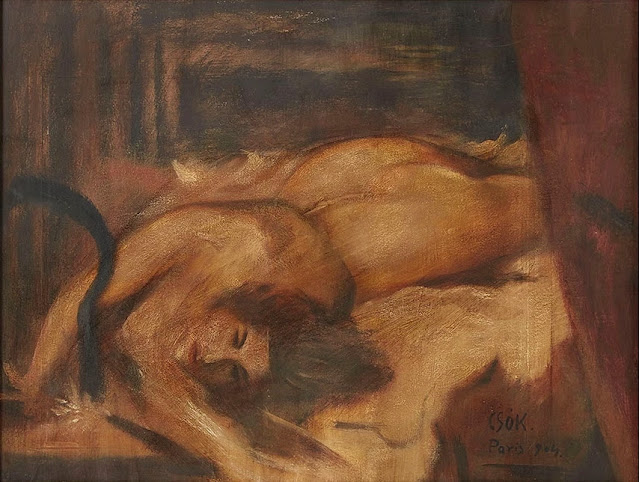Victor Gabriel Gilbert, French, 1847 - 1935
Marché aux fleurs
Oil on canvas
25¾ by 21½ in.; 65.4 by 54.6 cm
Private collection
Sold for 44,100 USD in January 2023
Victor Gilbert was celebrated as the foremost painter of Parisian marchés during the final decades of the 19th century, when daily markets proliferated throughout the French capital to satisfy the growing upper and middle classes.
Located on Place Louis Lépine between the Notre-Dame Cathedral and Sainte-Chapelle chapel, the flower market has attracted avid gardeners and curious passersby since 1830. Both covered and open-air, the market is mainly formed by pavilions from the 1900s.
Victor Gabriel Gilbert born in Paris the 13 February 1847 and died in the 21 July 1933. He was a French painter. He is buried in Montmartre cemetery in Paris. In 1860 he apprenticed to a painter and decorator. He followed with evening art classes under the direction of Father Levasseur, the School of the City of Paris. In the late 1870s, his taste for naturalism is developed and he turned to genre painting with scenes of streets, cafes, markets, especially that of Halles . He obtained a second class medal at the Salon of 1880 and a silver medal at the 1889 World Fair . It becomes a member of the French Society of Artists in 1914.
Victor Gilbert was appointed Knight of the Legion of Honour in 1897, and received the Prix Léon Bonnat in 1926. More on Victor Gabriel Gilbert
Please visit my other blogs: Art Collector, Mythology, Marine Art, Portrait of a Lady, The Orientalist, Art of the Nude and The Canals of Venice, Middle East Artists, 365 Saints, 365 Days, and Biblical Icons, also visit my Boards on Pinterest
Images are copyright of their respective owners, assignees or others.
Some Images may be subject to copyright
I don't own any of these images - credit is always given when due unless
it is unknown to me. if I post your images without your permission, please tell
me.
I do not sell art, art prints, framed posters or reproductions. Ads are
shown only to compensate the hosting expenses.
If you enjoyed this post, please share with friends and family.
Thank you for visiting my blog and also for liking its posts and pages.
Please note that the content of this post primarily consists of articles
available from Wikipedia or other free sources online.








.jpg)




.jpg)

